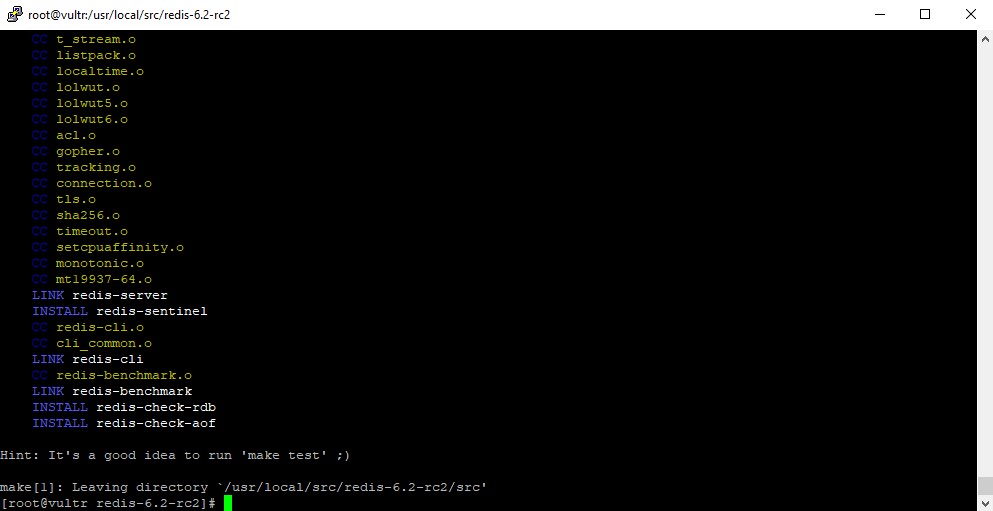

- #CENTOS INSTALL REDIS CLI UPDATE#
- #CENTOS INSTALL REDIS CLI LICENSE#
- #CENTOS INSTALL REDIS CLI MAC#
We are going to configure Redis for remote connection from a client machine.Īccess the configuration file as shown: $ sudo vim /etc/nf The default installation only allows connections from localhost or Redis server and blocks any external connections. Step 3: Configure Redis for remote access You can confirm this by running the netstat command: $ sudo netstat -pnltu | grep redis Once started, you can verify its status by executing $ sudo systemctl status redisīy default, Redis runs on port 6379. To start and enable Redis service, run following systemctl commands: $ sudo systemctl start redis
#CENTOS INSTALL REDIS CLI LICENSE#
To retrieve more information about Redis such as the version, architecture, license and a brief description, run the command: $ rpm -qi redis Once installed, you can verify the version of Redis installed by running the command: ~]$ rpm -q redis Simply run the command: $ sudo dnf install redis -y Redis version 5.0.x is now included in CentOS 8 AppStream repository and installing it is a walk in the park.
#CENTOS INSTALL REDIS CLI UPDATE#
Login to your CentOS 8 / RHEL 8 system and update system packages and repositories using the command: $ sudo dnf update -y Step 2: Install Redis with dnf Now let’s see how you can install Redis on CentOS 8 / RHEL 8 Step 1: Update system repositories
Redis supports a wide range of data types such as hyperloglogs, hashes and geospatial data. Social media platforms such as Instagram use Redis for storing images. It can be an excellent option for caching websites. Used for integration with AWS services such as CloudTrail, CloudWatch, and Amazon EC2 instances. Analysis of real time statistical data. 
With the above-outlined benefits, Redis can be used in the following ways:
#CENTOS INSTALL REDIS CLI MAC#
Redis is a cross-platform database and caching system which can be installed in Windows, mac and Linux. Given its small footprint, Redis can be installed in IoT devices such as Raspberry Pi and Arduino to support IoT apps. Redis has the ability to store large key & value pairs of up to 512 MB. When changes are made to the master node, they are automatically replicated on the slave nodes to ensure high availability. Redis ships with a Master-Slave replication feature. The redis cache system is quite robust and has the capacity of withstanding failures and interruptions. The in-memory architecture of Redis makes it super-fast in storage and retrieval of data. While it does so, it also offers persistence to data being written on it. One of the apparent uses of Redis is its use as a caching system. Feeding data to Redis is simple and straightforward. This makes it simple and flexible as there’s no need of creating any tables, columns and rows which are associated with relational databases. Unlike relational databases like MySQL, Redis is a NoSQL database that stores data as a key value pair. SET “car” “Mercedes” Benefits of using Redis In a Redis database, this information can be written using the syntax: In this case, car is the key and Mercedes is the value.






 0 kommentar(er)
0 kommentar(er)
